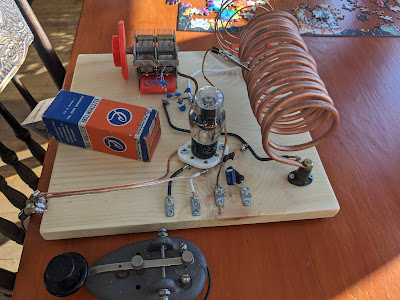Bike Mobile POTA Mini-adventure

My last POTA adventure was two summers ago, but with a new bike beckoning and several new parks appearing on the pota.app map page, it was time to give a local activation a try. This time, I cycled over to the Campbell Carriage Factory Museum, a beautifully situated and restored facility about 5km north of the trans-Canada highway as it passes by Sackville, NB. If you're driving by on your way to Nova Scotia, consider buying a lunch at the usual places on the highway and driving up to this site to eat and enjoy the setting. After a bit of a disappointment on 30m in August, I stuck to 20m this time and -- probably more importantly -- was sure to publish my plan on pota.app so the spotting network could get me up. My antenna is a wire 1/4 wave vertical with 3 radials drooping from 1m off the ground to touching it. Rather than using bikepacking bags, I just threw everything in a backpack; since the ride was only about 8km away, I wasn't going to get any aches from riding with th...





